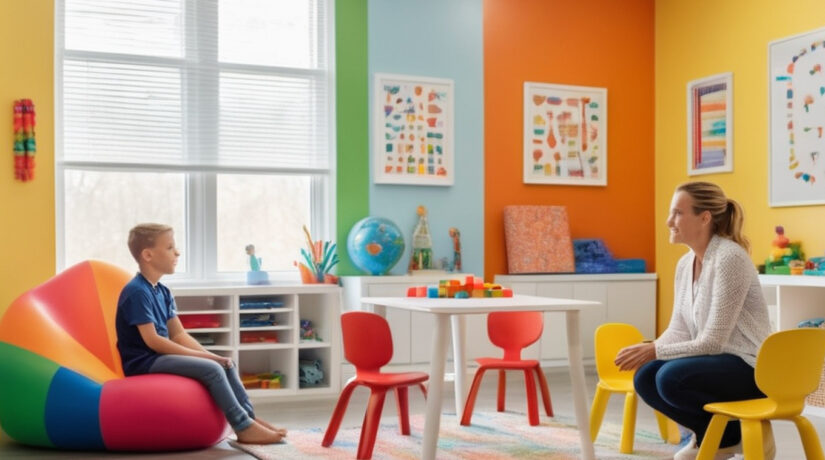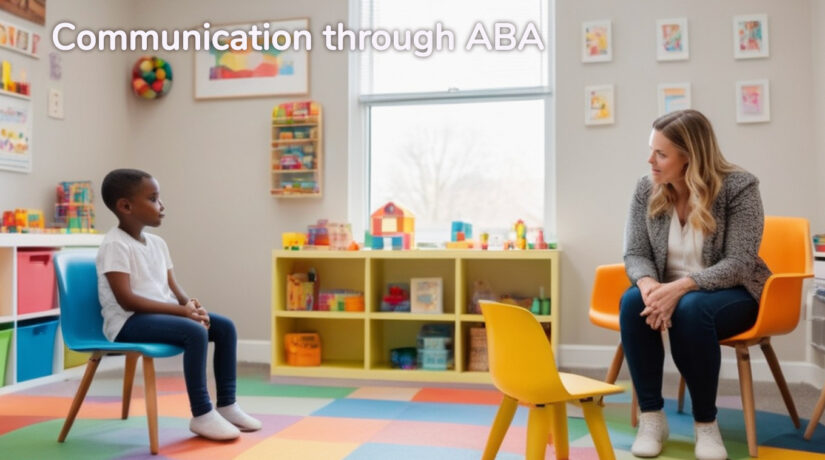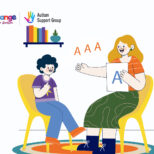Speech Therapy
Speech therapy integrated into ABA therapy focuses on enhancing communication skills, particularly for children with autism or other developmental disorders. By combining speech therapy techniques with the principles of ABA, this approach targets both the development of language skills and the behaviors that support effective communication.
- +91 0 9901880396
- bechangeaba@gmail.com
- Our Branches
- Vignannagar / Whitefield
Speech therapy within ABA is often delivered in a 1-on-1 setting, allowing the therapist to tailor interventions to the specific needs of the child. This personalized approach ensures that the child receives the focused attention necessary to address their unique communication challenges.
Skill Development: The therapy aims to improve various aspects of communication, including verbal skills, non-verbal communication (such as gestures or eye contact), and social language use. Depending on the child’s needs, the therapist may work on articulation, vocabulary development, sentence structure, or conversational skills.
Behavioral Support: ABA principles are used to reinforce positive communication behaviors. For example, a child might receive praise or a reward for successfully using a new word or phrase. The therapist also works to reduce behaviors that interfere with communication, such as frustration or avoidance, by teaching alternative ways to express needs.
Data-Driven Progress: Just like in general ABA therapy, progress in speech therapy is tracked through data collection. This allows the therapist to monitor improvements, identify areas needing more focus, and adjust the therapy plan as the child’s skills develop.
Family Involvement: Parents and caregivers play a crucial role in speech therapy through ABA. They are often trained in techniques to support their child’s communication development at home, reinforcing the skills learned during therapy sessions.
Generalization of Skills: The ultimate goal of combining speech therapy with ABA is to help the child generalize their communication skills to real-life situations. This means that the child can apply what they’ve learned in various settings, such as at home, school, or in social interactions, leading to more meaningful and functional communication.
Positive Reinforcement: Throughout the process, positive reinforcement is used to motivate and encourage the child. This might include verbal praise, favorite activities, or tangible rewards, all aimed at making communication a positive and rewarding experience.
By integrating speech therapy into ABA therapy, children with communication challenges can make significant strides in their ability to express themselves, interact with others, and navigate their daily lives more effectively.
Speech therapy through ABA therapy combines speech-language interventions with the principles of Applied Behavior Analysis to improve communication skills in children with autism and other developmental disorders. This approach focuses on enhancing verbal and non-verbal communication, using personalized, one-on-one sessions that reinforce positive communication behaviors and reduce obstacles to effective interaction. By tracking progress through data and involving family members in the process, the therapy aims to generalize communication skills to real-life situations, helping children express themselves more clearly and confidently in various settings.
Start by introducing what Speech Therapy through ABA Therapy is and its focus on helping children with autism or other developmental disorders. Highlight how this approach integrates speech-language interventions with ABA principles to enhance both verbal and non-verbal communication skills.
Next, explain the methodology used, including the 1-on-1 focus, where sessions are personalized to the child’s needs. Discuss the role of behavioral support in reinforcing positive communication and reducing barriers. Mention how progress is tracked through data collection and how skills learned are applied in real-life situations.
Finally, emphasize the importance of family involvement in reinforcing these skills at home. Conclude with the benefits of positive reinforcement and the overall impact on the child’s ability to communicate more effectively in their daily life.
In Speech Therapy through ABA Therapy, you have a special guide who helps kids with communication, just like a superhero sidekick. This guide creates a fun plan to teach kids how to talk better, use gestures, and interact with others. The sessions are packed with enjoyable activities and games, making learning exciting. When a child tries hard or achieves a new skill, they get praise or rewards to keep them motivated. The guide keeps track of progress and adjusts the plan as needed, like a coach refining a game strategy. Families are involved too, supporting their child’s progress at home. Together, this team helps kids improve their communication skills in a supportive and fun way.
The main goal is to improve communication skills in children by combining speech-language interventions with ABA principles. This approach helps children develop verbal and non-verbal communication skills, improve social interactions, and apply these skills in real-life situations.
During sessions, a trained therapist works one-on-one with your child, using engaging activities and games to teach communication skills. The therapist reinforces positive behaviors with praise or rewards, tracks progress with data, and adjusts the plan as needed. This personalized approach ensures that your child’s unique needs are addressed effectively.
You play a crucial role by reinforcing the skills your child learns during therapy. The therapist will provide guidance and training on how to use ABA techniques at home. By practicing these skills and providing positive reinforcement, you help your child generalize their communication abilities to everyday situations.






